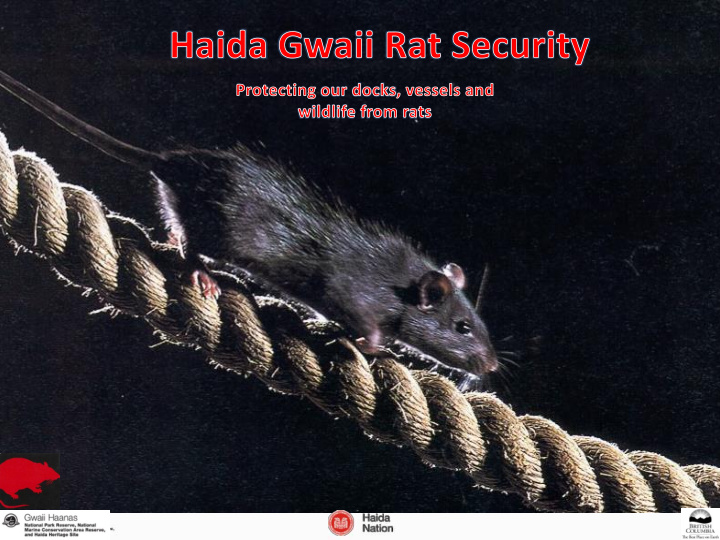



Why the concern about rats on Haida Gwaii? Haida Gwaii supports 1.5 million nesting seabirds from 12 species
Seabirds in Haida Gwaii are a local, regional, and global trea\sure • Half of the world’s ancient murrelets. • 18% of the world’s Cassin’s auklets (BC has 80% of global population) • Fork tailed and Leach’s storm petrels – 21% of BC population • Rhinocerus auklet – 4% of global population (7% of BC population) • Half of the British Columbia population of Pigeon guillemots
Rats are Predators • Rats are very efficient at preying on seabirds • They consume eggs, as well as chicks and adults during breeding seasons • This has an extremely Alaska detrimental effect on populations. • Rats ability to reproduce rapidly can increase this effect. Alaska
Rats also • Threaten human health • Damage property and infrastructure including boats • Eat most anything including, wires, wood and electronics • Are prolific breeders; one pair can have 2000 young/year • 100 million per year in USD on rat control • Half of bird and reptile extinctions have been caused by rats worldwide
Islands are particularly vulnerable to rats and introduced species • Isolated from the mainland, islands on Haida Gwaii are hotspots for biodiversity • Seabirds evolved in the absence of rats; they have no natural defences • Seabirds are ground nesters. This makes them easy prey for rats. Langara Island ANMU - Gaston 1992; Regehr et al. 2007
Why the focus on docks and marinas? Marinas can be an introduction point. Rats can “hitch” rides from marinas to remote locations in a number of ways: • Fishing vessels (including fish processers) • Passenger vessels • Aircraft This provides an easy source of transportation for rats to invade remote areas.
We want your help by: • Distributing rat proofing kits to vessel owners • Talk to boat owners about the importance of keeping vessels rat free • Prevention • Rat control around marinas to reduce risk of invasions to islands
What can you do? • Store food and wastes securely. • Shake out nets and lines. • Keep decks tidy so rats have fewer places to hide. • Inspect your vessel and equipment for signs of rats (i.e. chewed wires, rub marks, feces and hair). • Use rat traps and bait stations to trap rats. • Seal entry points on your vessel. rats can get through holes as small as ½ inch. • Use rat guards on tie up lines. • Toxic baits are an effective control measure
Use the Best Control Methods Available • Learn rat behaviours • Place traps, baits in rat territories and routes • Establish an on-going prevention/ control program • It is better to maintain a continuous prevention program than to respond to a rat crisis
If you find a rat aboard your boat • Do not throw a live rat overboard! They are good swimmers and may reach land. • Dispose of the rat in a secure garbage receptacle. • Do not assume it is the only one, most likely there are more
Prevention is easier and costs less • Ongoing control for rats to prevent future invasions is needed • Regular monitoring is essential Rat eradications are difficult, time consuming and very expensive! Many cost over a million dollars.
Rat guards Shake out nets Store food properly
Contact the Harbour Master, Parks Canada or BC Parks in Masset for a FREE rat-proofing kit for your vessel.
Additional Resources Rat Control: For Alaska Waterfront Facilities (book) http://www.victorpest.com/advice/rodent-library/norway-rats http://www.healthlinkbc.ca/healthfiles/hfile37.stm http://www.stoprats.com/
Recommend
More recommend